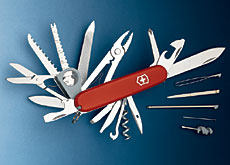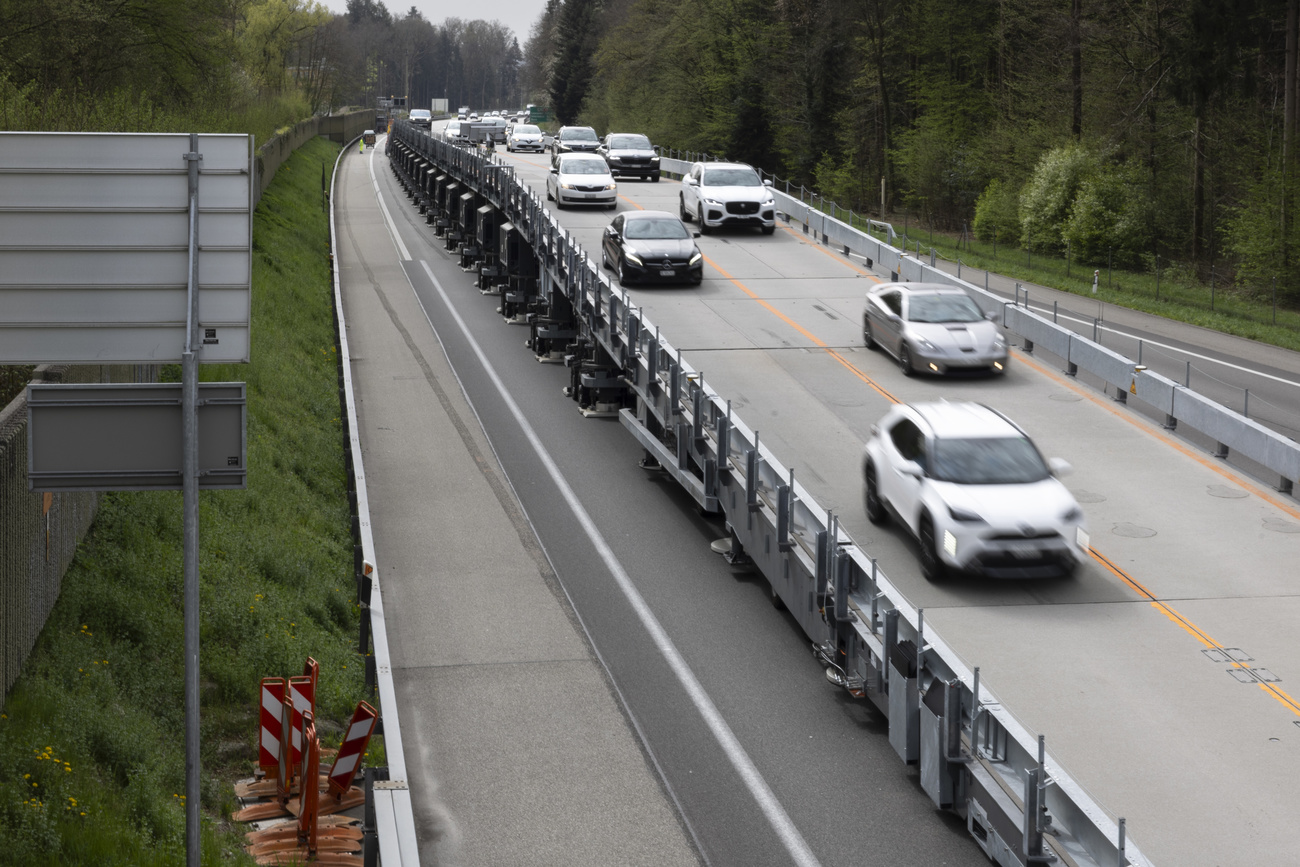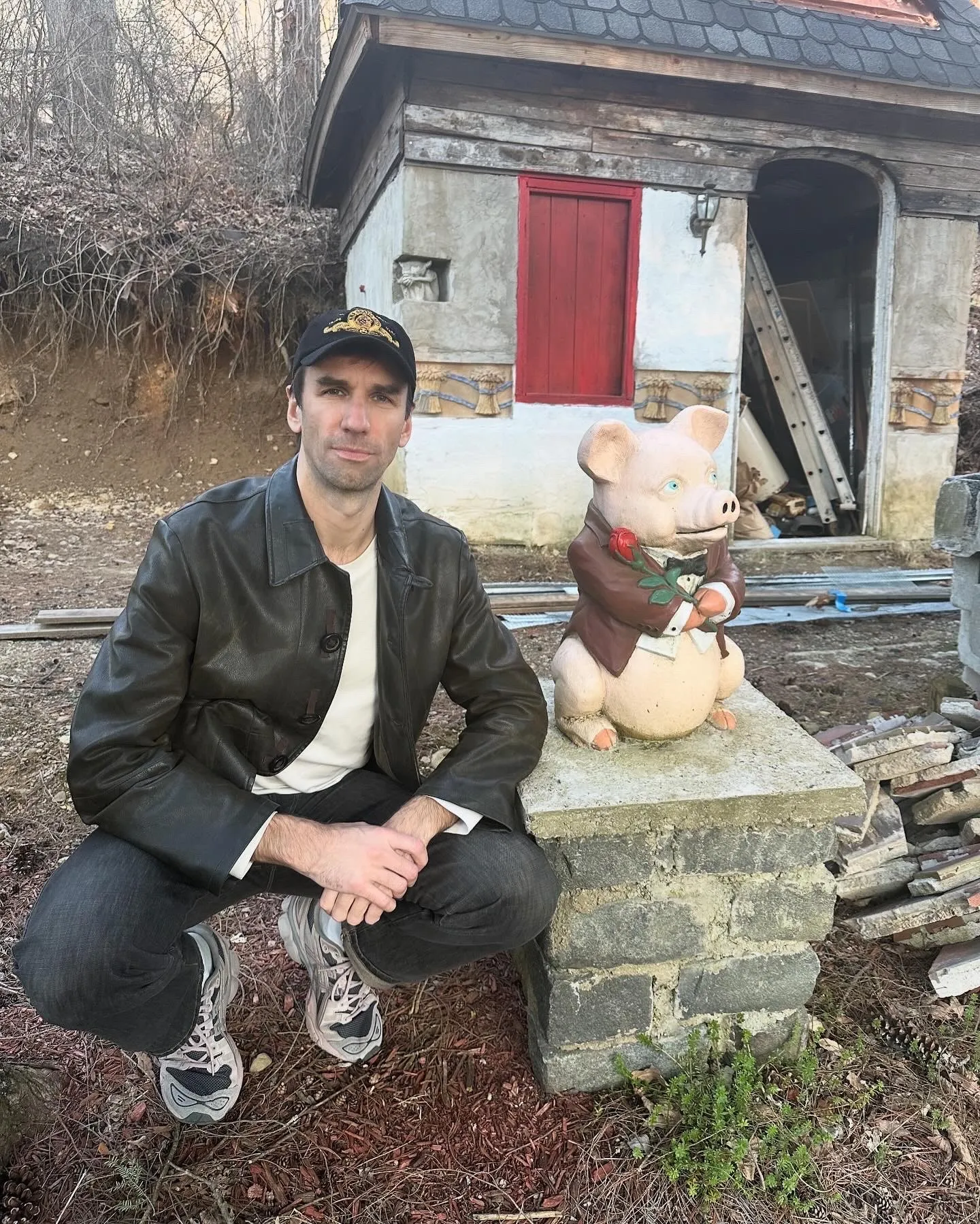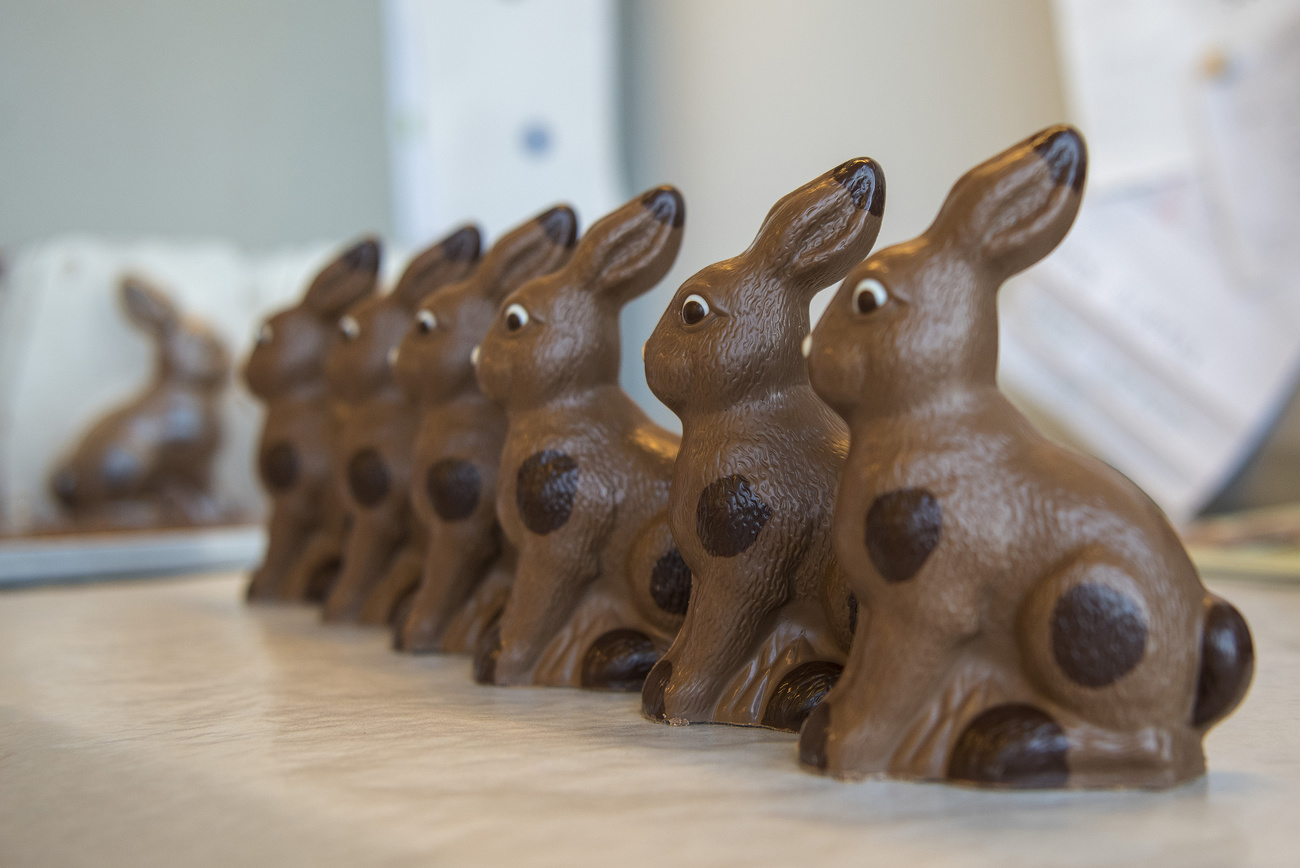Army knife is still a cut above the rest

It has saved lives, it is a present of presidents, it is standard equipment for Space Shuttle crews and it continues to sell by the million.
If anything is a real symbol of Switzerland, it must surely be the Swiss Army knife, the little red prodigy that stands for precision and quality.
Its image is so polished that it is frequently used in advertising for products that have absolutely nothing to do with a pocket tool. But to keep that reputation, innovation plays a key role.
“Innovation is, as for any manufacturing company, extremely important and vital in order to survive in the future,” Walter Mathis, export manager of the Victorinox company told swissinfo.
Victorinox, based near the central city of Schwyz, is the larger of the two companies in Switzerland officially allowed to manufacture the knives.
“Novelties demanded”
“Every year we have novelties coming out which are needed and demanded by the market. The consumer environment changes and the marketplace requires constant innovation and adaptation,” Mathis added.
Over the past two years, for example, Victorinox has come out with a knife featuring an altimeter, its Voyager has a clock with an alarm and timer, and its Cybertool has up to 41 features for electronics and computer enthusiasts.
The latest company baby is called StayGlow because of its fluorescent handle. And Mathis says the Japanese have already shown particular interest in the product because of the threat of earthquakes.
“When earthquakes occur, the first thing that goes out is the light,” Mathis explained. “Because StayGlow shines in the dark, this makes it a perfect product for the immediate need of having light when it goes dark.”
The story of the Swiss Army knife, which has made its way into the “Good Design” collection of New York’s Museum of Modern Art, goes back over 100 years.
Cutler Karl
In 1884, after serving his apprenticeship as a cutler in Tuttlingen in Germany, 24-year-old Karl Elsener returned home and opened his own business in Ibach near Schwyz.
It was on his initiative that the Swiss Master Cutlers’ Association was founded, the main aim being to produce the soldiers’ knives that the Swiss Army had been importing from the German cutlery town of Solingen.
Elsener, who gave his knives names, produced the Officer’s Knife as a refinement of the Soldier’s Knife. Besides the blade, punch, can opener and screwdriver fitted to the soldier’s model, there was a second smaller blade, sometimes called the erasing blade, and a corkscrew.
This model of pocket knife, with only two springs for six blades, was the basic model for what is now universally known as the Swiss Army knife. It was patented on June 12, 1897.
Although the Officer’s Knife did not become part of the Swiss Army’s official equipment, it rapidly became a favourite. Army officers bought the knife themselves at cutlery stores.
Worldwide expansion
Sales were fuelled after the Second World War, with United States officers and soldiers snapping the knives up at the PX stores on military bases. This was the time when Victorinox began worldwide expansion.
The knife is now available is more than 100 different variations and combinations. The flagship is the Swiss Champ, which has 33 features, 64 individual parts and requires 450 steps to produce.
Poor quality copies of the knife, mainly from Far East countries, are a headache for the company. Some of the imitations even go as far as including the Swiss cross, a factor which has required intervention by Swiss embassies, or legal means, to prevent.
“We feel bad about imitations because we have the cost in research and development and imitators of course do not have these investments,” Mathis commented.
However, copies are in a way a tribute to the genuine article, which has stood the test of time for more than 100 years. It is, in knife language, quite simply a cut above the rest.
swissinfo, Robert Brookes in Ibach
The Swiss Officer’s Knife, featuring only two springs, was patented on June 12, 1897.
Victorinox now makes more than 100,000 knives per day, of which about 65,000 are pocket models.
The latest addition to the product range is called StayGlow and features a fluorescent handle that light up in the dark.
Founded in 1884, Victorinox is Europe’s largest cutlery manufacturer.
The present name of the company (1921) is derived from Victoria, the name of the mother of the founder, and Inox (stainless steel).
Since 1998, the company has also had its own watch company at Bonfol in the Swiss Jura region.
In 2002, Victorinox bought its US representative, Swiss Army Brands Inc.
The company is now run by Carl Elsener III (grandson of the founder) and his son, Carl Elsener IV.
Wenger of Delémont is the only other company officially permitted to make the Swiss Army knife.

In compliance with the JTI standards
More: SWI swissinfo.ch certified by the Journalism Trust Initiative








You can find an overview of ongoing debates with our journalists here . Please join us!
If you want to start a conversation about a topic raised in this article or want to report factual errors, email us at english@swissinfo.ch.